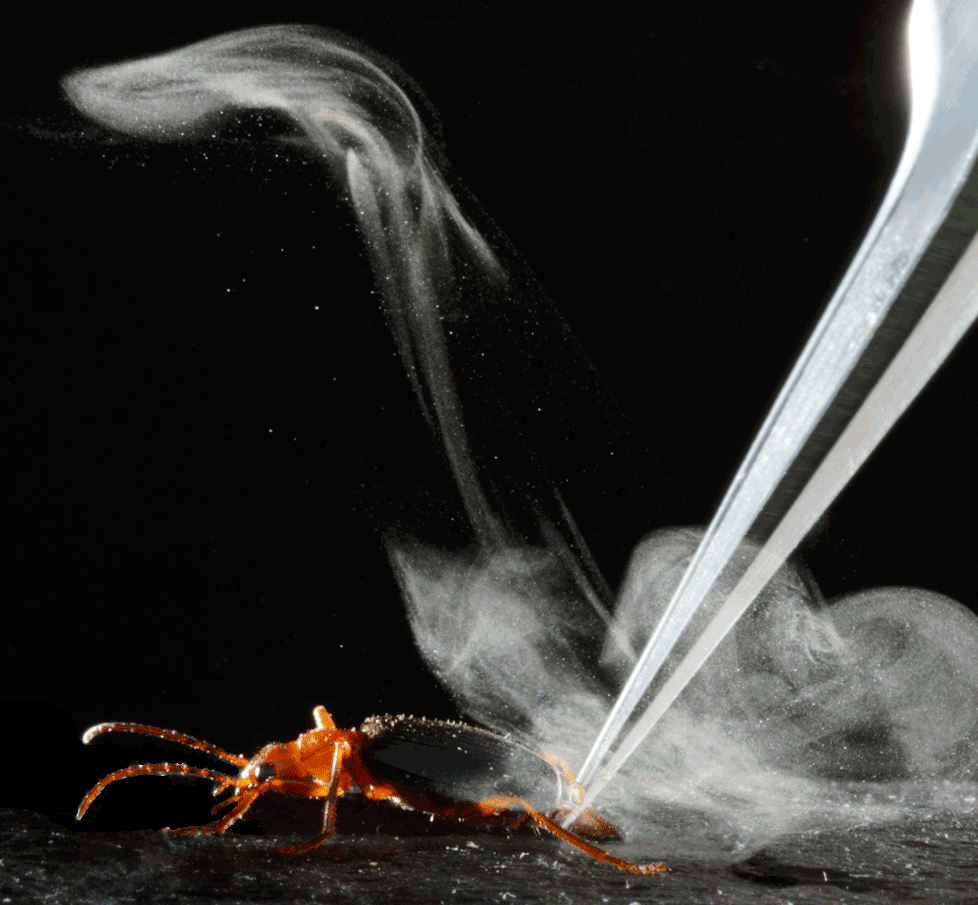Dont Bug this Beetle
An SDSU biology professor is studying beetles that create a stinky and hazardous explosion when they feel threatened.

“It’s a foul-smelling liquid that is quite shocking and distasteful to predators such as toads,” said Tanya Renner, an assistant professor in San Diego State University’s biology department. If a predator tries to eat the bombardier, it gets a mouthful of this unpalatable liquid.
Despite the obvious hazards of studying the creature, Renner is passionate about bombardier beetles. And she’s not the only one: Her lab’s plan to sequence the beetle’s genome is currently in the running to receive funding from the company Pacific Biosciences.
It’s easy to see why the small bug drums up such big excitement.
“If you bug the bombardier beetle enough, it can explode multiple times in a row, but the explosion doesn’t hurt or kill it,” said Renner, who has been studying these creatures for three years. "The beetle remakes its defensive chemicals within a few days. I am really curious about the chemical process happening inside this amazing and explosive beetle.”
What we know so far
Bombardier beetles live in woodlands and grasslands near water sources, where they lay their eggs. The beetles Renner collects for her research live in the Madrean Sky Islands near Tucson, Arizona. Right now in the spring, the future beetles are still in their larval state, feasting on other insects.Most bombardier beetles are nocturnal and carnivorous, so in addition to the beetles' vicious chemical defense mechanism, they strike when their food sources least expect it—in the middle of the night.
Their nocturnal nature forces Renner and her team—comprised of scientists from the University of Arizona, University of California, Berkeley, and the Stevens Institute of Technology—to collect the beetles after dark. Renner is heading to Arizona over summer break to gather new specimens for her research.
Renner’s team, which includes three SDSU undergraduate students who work in her lab, is currently funded by a $284,000 grant from the National Science Foundation (NSF). The grant allows them to look at the beetle’s chemical defense mechanism on a molecular level and study how this system evolved.
With the help of the grant, the team will attempt to identify the genes involved in the production of the beetle’s quinones, a group of molecules that react violently with hydrogen peroxide to produce the beetle’s fiery hot blast.
Renner hypothesizes the beetle evolved its explosive defense abilities over time to adapt to its environment. The same quinones found in the liquid the bombardier beetle expels are also used in the hardening of its exoskeleton, and scientists believe the beetle co-opted these chemicals for defensive purposes. Renner’s NSF-funded research combines genetics with chemistry to reveal insights into the fundamental process of evolution.
The next level
Renner and her collaborators now want to take their research to the next level by sequencing the genome of the beetle. It would be the first genome from a major branch of the tree of life, the beetle suborder Adephaga, providing a unique genetic point of comparison to other insects and to the few existing beetle genomes, which are all from other suborders. Renner hopes to learn how the beetle makes its toxic chemical brew, stores it within its body, and discharges it without self-injury.Sequencing the genome is not an easy or affordable task, so Renner is seeking outside help from Pacific Biosciences. The company is currently running the World’s Most Interesting Genome challenge and Renner’s bombardier beetle project is one of five finalists in the contest. The proposal that receives the most votes during a public vote will be awarded PacBio SMRT Sequencing and genome assembly.
“The first bombardier genome will solve a long-standing evolutionary puzzle,” said Renner. “If we can sequence the bombardier’s genome, it would allow us to understand the genetic basis of the beetle’s chemical production, which would really accelerate our ongoing NSF-funded research.”
The public vote is open until Wednesday, April 5.


